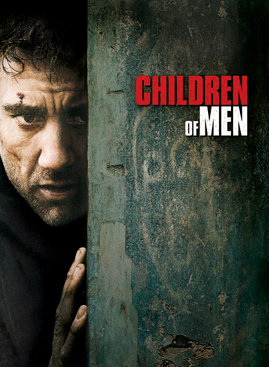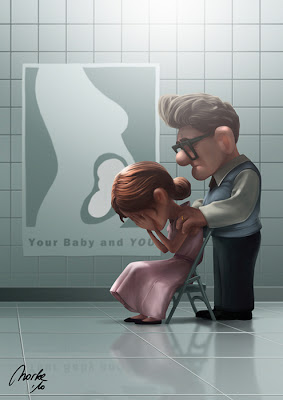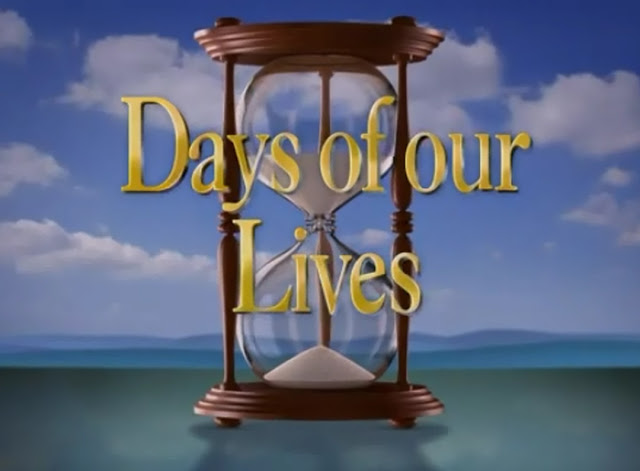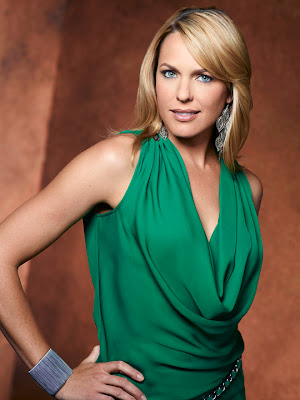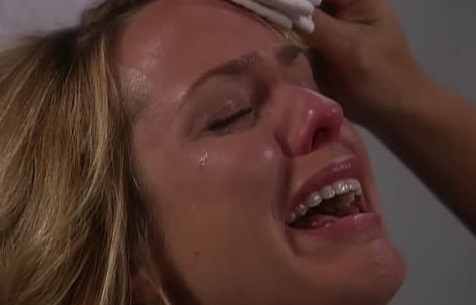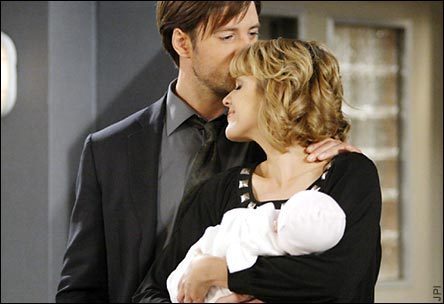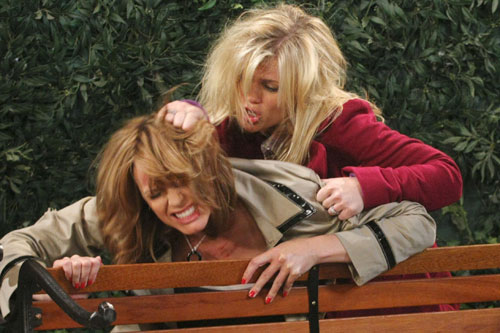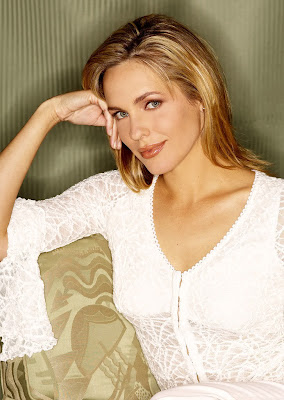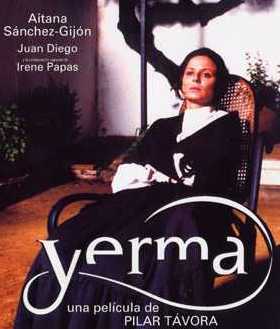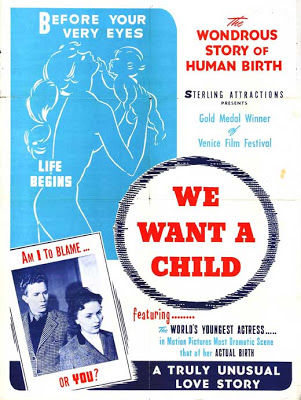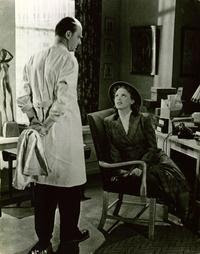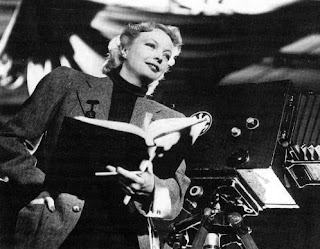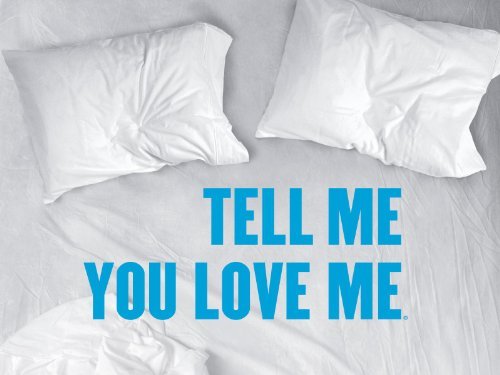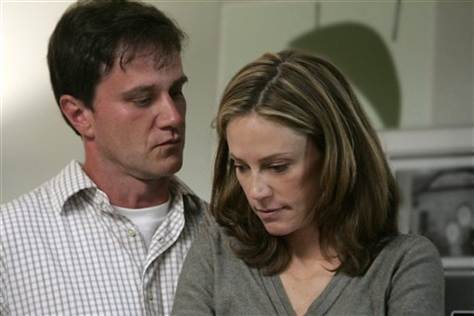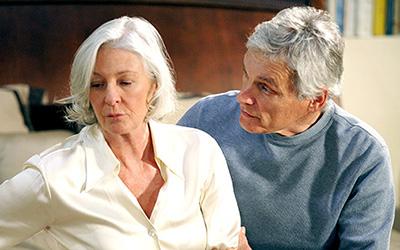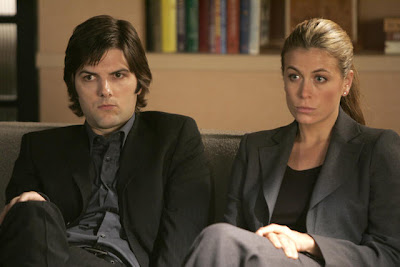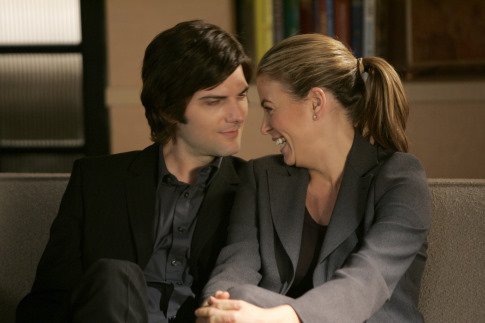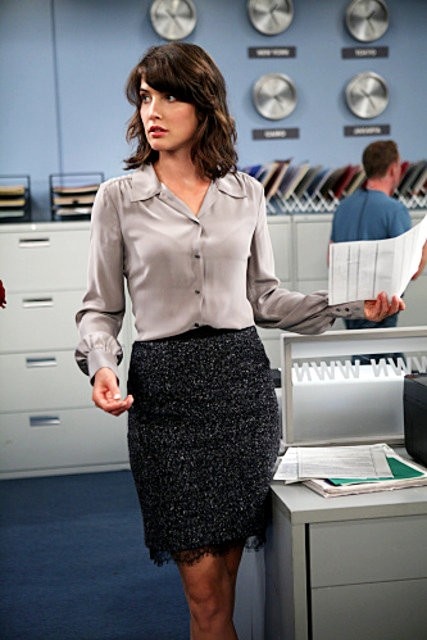 |
| Children of Men (2006) |
The “Plague” of Infertility in Alfonso Cuarón’s Children of Men by Carleen Tibbetts
Women can’t get pregnant anymore and nobody knows why. This the central lamentation in Alfonso Cuaron’s 2006 dystopian film Children of Men, based on P.D. James’s novel. Set in England in the year 2027, this is the story of the human race entering its final phase. Cuaron brings us into Orwellian territory in which nations worldwide have fallen as a result of war, disease, and famine. Britain remains a sort of lucrative last bastion in these end times and people across the globe are scrambling to get in.
 |
| Sarah from Inside (2007) |
Inside: French Pregnant Body Horror at Its Finest by Deirdre Crimmins
Horror films have a unique way of showcasing exactly what we fear, but they often do so in a subtle way. While is it goes without saying that ax-wielding maniacs are to be feared, these films often slyly expose the issues that our society is too shy to deal with head on. In the 2007 French horror film Inside (directed by Alexandre Bustillo and Julien Maury), fertility, reproduction, and infant loss are dealt with in a refreshingly direct and uncompromisingly bloody outcome, with no room for subtlety.
 |
| Robin in How I Met Your Mother |
How I Met Your Mother: One of the Few TV Shows to Explore a Childfree Life for Women by Megan Kearns
HIMYM suffers many gender problems. Yes, it infuriated me Lily received so much backlash when she went to LA to pursue her dream of an art career. Almost everything Barney says or does – his sexist stereotypes, objectification of women, and fat-shaming – pisses me off. And yes, it bugs me that Robin’s unconventional female personality of Scotch drinking, hockey loving, cigar smoking and gun ownership has been pinned on her father raising her as a boy…even going so far as to name her Robin Charles Scherbatsky, Jr. But the show hasn’t fallen into the sexist trap that a woman isn’t a “real” woman without a baby.
 |
| Buffy comics, Season 9 |
Buffy Season 9: Sci-Fi Pregnancies and the Story that Almost Was by Pauline Holdsworth
Nikki Wood—New York punk slayer and the mother of ex-Sunnydale High principal Robin Wood—had been absent from the Buffyverse for a long time. So it’s a bit of a surprise when she shows up in the opening scenes of “On Your Own,” the second volume of the Season 9 Buffy the Vampire Slayer comic books. She’s being held off the edge of a tall building by the throat, pumped full of sedatives that have taken away her powers for a Council-mandated rite of passage. She’s pregnant.
 |
| Peekaboo: Still born. Still loved |
Stillbirth. Still Ignored by Debbie Howard [Trigger Warning]
I completed my short drama Peekaboo nearly two years ago, but I started writing it about three years before that. I had two friends who had experienced baby loss, one to miscarriage and one who had given her baby up for adoption. I had a dream one night that merged these two stories together; this was the beginning of Peekaboo, which is about a couple who has lost three babies to stillbirth. I wrote a first draft of the script then started researching in great detail as I developed the script. I was shocked to discover that hardly anything had been made about this subject before.
 |
| Tell Me You Love Me (2007) |
Infertility and Miscarriage in HBO’s Tell Me You Love Me by Stephanie Rogers
Perhaps what I found interesting, and even important, especially as a woman starting to understand how feminism fit into my life in a practical way, were the gender dynamics at play in Palek and Carolyn’s pregnancy struggles. Throughout the ten-episode arc, Carolyn basically treats Palek as a sperm donor, and his complaints about the lack of intimacy in their relationship stem from that—he wants feeling and emotion attached to making love with his wife; yet Carolyn sees that as unimportant, often demanding that he provide her with sex whenever she asks for it.
 |
| Kee, played by Clare-Hope Ashitey |
The Exploitation of Women in Alfonso Cuarón’s Children of Men by Amanda Rodriguez
Children of Men‘s depiction of women as props, tools, symbols, or cardboard underscores the notion that women’s true purpose is reproduction, and when women can’t reproduce, they’re not only useless, but society itself collapses under the burden of their neglect of duty. Despite many of the intriguing themes this film explores (including a scathing denouncement of the treatment of immigrants), Children of Men ends up falling in line with its mainstream contemporaries to assert that women are merely bodies, that a woman’s value lies in her ability to reproduce, and that she has and should have no control over that body or that ability to reproduce.
 |
| Jennifer Garner as Vanessa Loring in Juno |
Vanessa Loring: Pathetic or Plausible? A Matter of Perception by Talia Liben Yarmush
What really hit me was Jennifer Garner’s character, Vanessa. In past viewings of the movie, the hopeful adoptive mother seemed somewhat desperate. Her overly enthusiastic smile. The fact that Juno’s snarky remarks would fly past her with barely any recognition. Her obsessive questioning and controlling perfectionism. When saying goodbye after meeting for the first time, Vanessa asks Juno how likely she is to go through with the adoption, and Juno says, nonchalantly, that she is going to do it. “How sure would you say you are? Like, would you say you’re 80% sure, or 90% sure?” Vanessa pushes. She was more than desperate, really. She was pathetic. She seemed to be written for the purpose of added comic relief. But as my friends laughed at her on screen, I felt sad, and angry.
 |
| We Want a Child (1949) |
The Power of Portrayal: Infertility, Reproductive Choice and Reproduction in We Want a Child by Leigh Kolb
The frank discussion about infertility, abortion, prenatal care and adoption make this film noteworthy. It feels quite remarkable to watch characters discuss the range of emotions surrounding these subjects. The film isn’t a masterpiece, and it moves quickly and relies on some common tropes surrounding the topic of infertility and adoption, but some of the dialogue is striking in its honesty and timelessness.
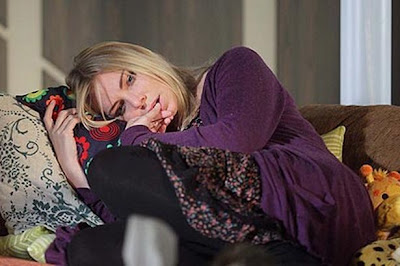 |
| Ronnie from Eastenders |
The Characterization of Bereaved Mothers: Are We Getting It Right? by Angela Smith
Ironically, script submissions are often invited by TV and film producers with the emphasis on creating strong female characters. However, soap writers seem all too eager to completely and utterly smash these women down to the point of no return. It’s one thing to cleverly show different sides to their personality, but to completely destroy a useful and inspirational character is unnecessary and sadistic.
 |
| Yerma (1999) |
Yerma: The Pain, Heartbreak and Destruction of Infertility and Patriarchy by Leigh Kolb
Yerma’s words about the deep, miserable feelings surrounding infertility are poignant and heartbreakingly accurate. While much is going on in this film worth discussing–the patriarchal culture that arranges marriages and ties a woman’s worth solely to her ability to have children, obviously, and the immediate blame of the woman when a couple can’t conceive–Yerma’s struggle with infertility is one of the most accurate portrayals of that grief that I’ve ever seen.
 |
| A mother makes a difference. |
How a Flatliners Ad During a Movie Showing Made This Woman Walk Out by Pandora Diane MacMillan
I think this was one of the very first film showings that included a special, movie-only commercial meant to promote a new line of Levi’s jeans. The new line was apparently to be called “Flatliners,” yes, a promotional tie-in with that film, with the association that Flatliner Jeans would make the wearer look slim and “flat.” They also apparently thought it would be cute, hip, and hilarious to display the young male wearer of said jeans as DEAD and FLATLINED and to have someone jumpstart the person’s heart with defibrillators(!).
 |
| Days of Our Lives |
Days of Our Lives: Punishing Nicole’s Fetus by Janyce Denise Glasper
Days of Our Lives writers appeared to be Nicole’s biggest adversaries, judgmentally weaving a “how can we top that last terrible heartbreak for this evil woman who committed paltry crimes at best?” Horrific enough that she went through the tragedy of losing a baby once, but to push her into repeating that trauma in an astonishingly grotesque manner seemed much uncalled for and heinous. They made an example of out this Mary Magdalene pariah, promising miraculous motherhood twice and ripping it from her grasp, a condemnation for her tumultuously stormy past.
 |
| Away We Go (2009) |
Away We Go: Infertility and the Indie Film by LD Anderson
I found Tom and Munch to be hurtful caricatures of infertile couples. I understand that the desire to have children of one’s own loins is very natural, and that the inability to do so can be extremely painful. However, I would dare say that society’s insistence on considering adoption second-rate, and its complete failure to recognize childless couples as families, makes it far more painful than it has to be.
 |
| Pixar’s Up (2009) |
When Life Gives You Infertility, Make Your House Fly: Found Family in Up by Talia Liben Yarmush
I can tell you that the first theme, miscarriage, is shown in only seconds, and it is a scene that will remain with you throughout the entire film. In thirty seconds, this animated family film is able to portray the loss in such a visceral way that even if you have never had an experience like it, you will be brought to tears. And I can tell you that the second theme, living childfree, is complicated and filled with mixed emotions.
 |
| “You are not alone in this.” |
Empty Wombs and Blank Screens: The Absence of Infertility and Pregnancy Loss in Media by Leigh Kolb
I try to rationalize why portrayals of infertility and pregnancy loss are so rare. Where is the action, a scriptwriting professor scribbled in my margins when I had too much internal dialogue or a conversation between female friends. There’s not much action in infertility. The struggle is literally and figuratively inside.
But then I realize I’m just making excuses for Hollywood. Infertility and pregnancy loss are rich with story-line possibilities. The very nature of these tragedies is in lock-step with literary conflicts and archetypes. (Wo)man vs. self? Check. (Wo)man vs. nature? Check. Journey/quest? Check. Unhealable wound? Check.
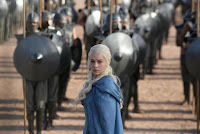 |
| Game of Thrones |
The Mother of Dragons Is Taking Down the Patriarchy in Game of Thrones: Daenerys, Feminism and Motherhood by Megan Kearns
Reproduction & Abortion Week: Mother and Child by Candice Frederick (first published on April 25, 2012)
What to Expect When You’re Expecting: Unexpected Gem by Robin Hitchcock (first published on October 12, 2012)
